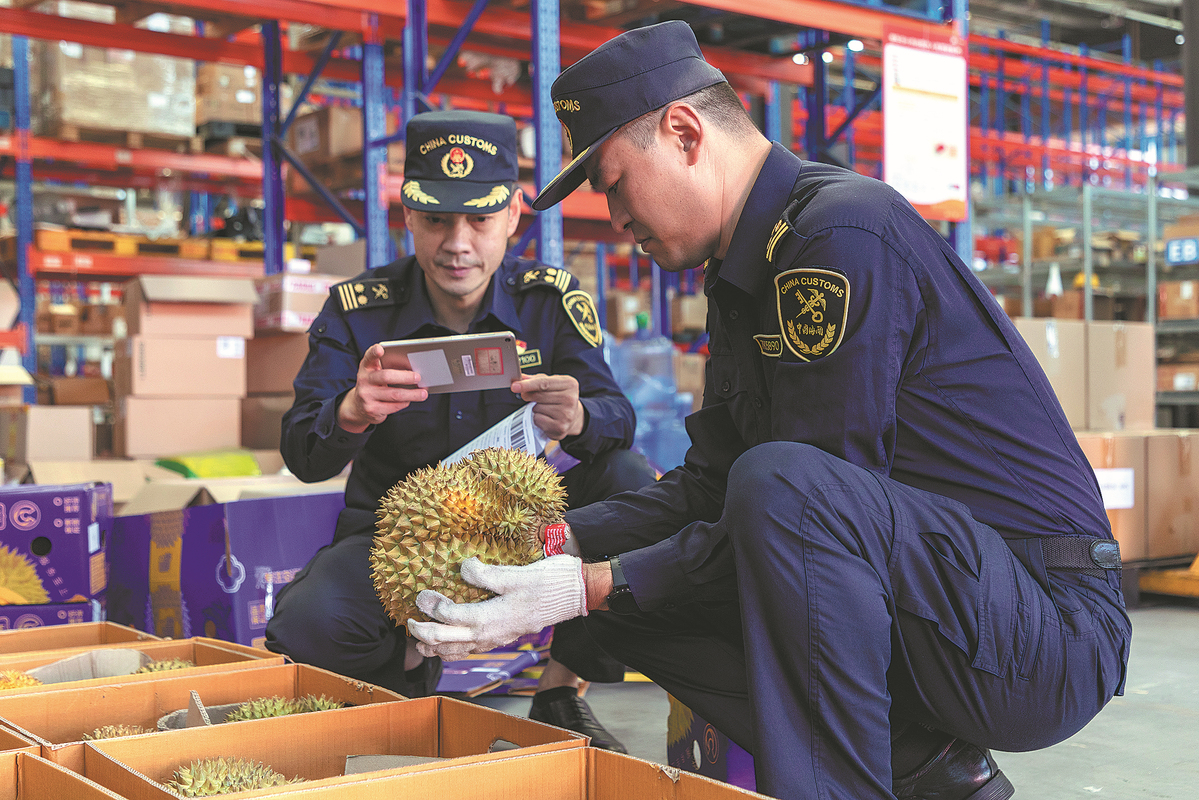Policy to help tap western region potential

China's push to develop its western regions through new policy measures will reduce regional disparities and further unlock the region's economic potential, market watchers and exporters said on Monday.
The General Administration of Customs (GAC) unveiled 15 measures aimed at advancing the large-scale development of the country's western regions on Sunday, with a particular focus on promoting openness.
The measures include support for the opening or expansion of ports in eligible areas, and the exploration of further measures to facilitate intermodal river-sea and rail-sea transportation.
The administration will support the construction of international aviation hubs in cities such as Chongqing municipality; Kunming, Yunnan province; and Urumqi, Xinjiang Uygur autonomous region, while promoting the export of specialty agricultural products from China's western regions.
Zhou Mi, a researcher at the Chinese Academy of International Trade and Economic Cooperation in Beijing, said that economic diversification and balance are central to China's long-term development strategy, especially in addressing the economic disparities between its eastern and western regions.
By building modern transportation infrastructure, fostering innovation and attracting investment, Zhou said China aims to create new economic opportunities in its western regions and reduce the disparity between regions, ultimately contributing to the nation's long-term prosperity.
Echoing that sentiment, Wan Zhe, a professor at the Belt and Road School of Beijing Normal University, said that improving transportation networks and supporting international hub development will allow China to streamline the movement of goods, reduce costs and boost export volumes.
These measures will further boost growth of the New International Land-Sea Trade Corridor, a landmark logistics network connecting China's western regions to global markets, particularly those in the Association of Southeast Asian Nations, she said.
The corridor reached a significant milestone by handling over 10,000 intermodal rail-sea train journeys in 2024, facilitating the transport of 87,846 twenty-foot equivalent units to and from member countries of the Regional Comprehensive Economic Partnership, a 32 percent year-on-year increase, according to Beibu Gulf Port Group, a Guangxi Zhuang autonomous region-based State-owned enterprise.
The foreign trade of China's western regions surged 8 percent year-on-year to 3.63 trillion yuan ($495.31 billion) from January to November, data from Chengdu Customs showed.
Southwest China's Sichuan province — a hub for high-value manufacturing and exports in western China — exemplifies this growth trend. Its export-import value rose 8.7 percent to 937 billion yuan in the first 11 months of 2024, driven by fast-growing industries such as electric vehicles, aerospace, energy and industrial equipment manufacturing.
One notable example is Sichuan Honghua Petroleum Equipment Co Ltd, a Deyang-based oil drilling equipment manufacturer.
"We have made significant progress in gaining overseas market orders, having signed export contracts for three island drilling rigs last week," said Wang Wei, general manager of the company's international business unit.
Island drilling rigs are designed to be stationed on artificial islands, typically constructed in relatively shallow waters. They are used to drill for oil, gas, or other minerals beneath the seabed, according to information provided by Sichuan Honghua.
Apart from traditional industries, new business models, such as bonded maintenance, have experienced rapid development in China's western regions in recent years, said Xie Hongjian, an official at Chengdu Customs.
The key measures introduced by the government will explicitly support the establishment of new business models such as bonded research and development, maintenance and remanufacturing in western regions, Xie added.
